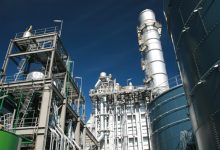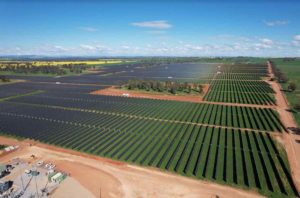The NCCC has outlined its plans for a gas-fired recovery in a leaked report. Essentially it is looking to lower the domestic price of gas to $4/GJ by following the U.S. model of gas production and build a gas intensive manufacturing base off the back of this cheap resource.
There are a number of problems with this approach, the first and most obvious being that we have already adopted the U.S. model on the east coast Australian onshore gas industry. Our drilling is done by U.S. contractors Halliburton and Schlumberger, our fracking techniques are wholly imported from the U.S. and we have followed the U.S. in our LNG technology.
The results of following this model have been nothing short of a disaster for the east coast coal seam gas (CSG) to liquefied natural gas (LNG) industry that the NCCC is looking to prop up.
The three major players in this industry on the east coast are Origin Energy, Santos and Shell. Since 2014 these three companies have written off over $19bn, a staggering amount. These large write-offs occurred prior to the recent crash in the gas price. Further substantial write-offs are a given.
In the U.S. the results have been equally bad for the companies involved. This year alone 19 oil and gas companies have filed for bankruptcy with $13bn of debt at risk.
While, undoubtably, the “shale gas revolution” has produced cheap gas prices for consumers, it is not a sustainable business model. Why? It has failed to make money for the last 10 years.
The gas industry is currently delaying projects, shutting in LNG capacity, and cutting capital expenditure budgets as gas prices plunge to all-time lows. At the same time, the NCCC is trying to stimulate the Australian economy by subsidising this industry at a time when even those within the industry are not investing.
The Commission’s favoured industrial project is an ammonia-based fertilizer and explosives factory for Narrabri in New South Wales. It neglects to look at world markets where ammonia-based fertilizer prices are at 10-year lows making any investment dependant on large government subsidies.
Other petrochemical-based companies are facing a similarly challenged outlook. According to the International Energy Agency (IEA), the pace of investment in petrochemical facilities in recent years has moved well ahead of the pace of demand growth. The over capacity has led to a significant drop in ethylene prices across the board.
Earnings of many chemical companies fell sharply by 60-80%, compared with 2018. The IEA notes that a confluence of weakened economic outlook and over capacity casts clouds over industry margins and utilisation rates in the coming years. The IEA also notes headwinds from a growing backlash against plastic waste, citing bans on single use plastics and plastic bags.
As such, breaking into a globally oversupplied market with a challenged demand profile in the short- and medium-term is problematic for new projects.
Overriding the lack of economics in the NCCC’s plans is the emissions profile of the fossil fuel, gas. IEEFA has written extensively about how the gas industry has been lying about its emissions. At best, gas is only marginally better than coal for greenhouse gas emissions and in many cases it is worse.
Gas will not materially reduce our carbon footprint, highlighted in Australia’s Technology Investment Roadmap:
“According to the International Energy Agency (IEA), switching from coal to gas can provide ‘quick wins’ for global emissions reductions and has the potential to reduce electricity sector emissions by 10 per cent.”
Reducing emissions by 10% compared to the high emitting coal is at best only a marginal progression towards net zero emissions.
The NCCC was tasked with stimulating the economy post COVID-19. Its gas-based agenda will increase emissions and is bound for failure as the markets will not allow it to succeed.
Bruce Robertson is a gas/LNG analyst with the Institute for Energy Economics and Financial Analysis (IEEFA).









